When traveling with luggage, ensuring the safety of your belongings is crucial. TSA locks are designed to provide security while allowing Transportation Security Administration (TSA) agents to inspect your luggage without damaging the lock.
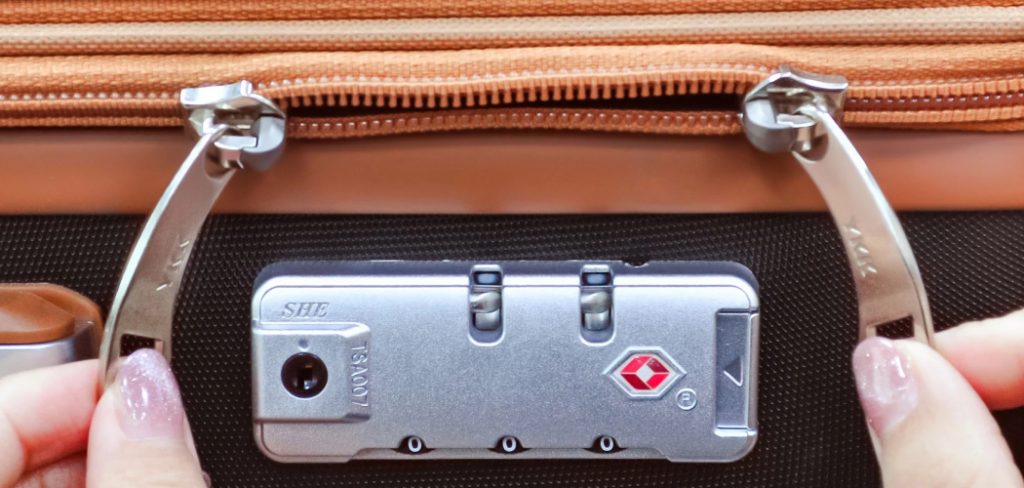
This guide on how to change tsa lock code will walk you through the simple steps needed to change the code on your TSA lock, helping you secure your items and travel with peace of mind.
Understanding TSA Locks
TSA locks are specially designed locks that comply with the guidelines set by the Transportation Security Administration. These locks have a unique feature—a universal keyhole that allows TSA agents to unlock and relock them using a master key during security screenings.
This ensures that your luggage remains secure without the risk of a broken lock if your bag needs to be inspected. TSA locks are identified by the Travel Sentry or Safe Skies logos, which certify them as TSA-approved. When choosing luggage or standalone locks, opt for TSA-approved options to avoid complications during your travels.
Things You’ll Need
- A Sturdy and Reliable Suitcase or Backpack
- Tsa-approved Locks
- Optional: Zip Ties or Cable Ties for Added Security
5 Simple Step-by-step Guides on How to Change Tsa Lock Code
Step 1: Determine the Type of TSA Lock
Before changing the code, you need to identify the type of TSA lock on your luggage. Common types include combination locks, key-operated locks, and locks integrated directly into the suitcase.
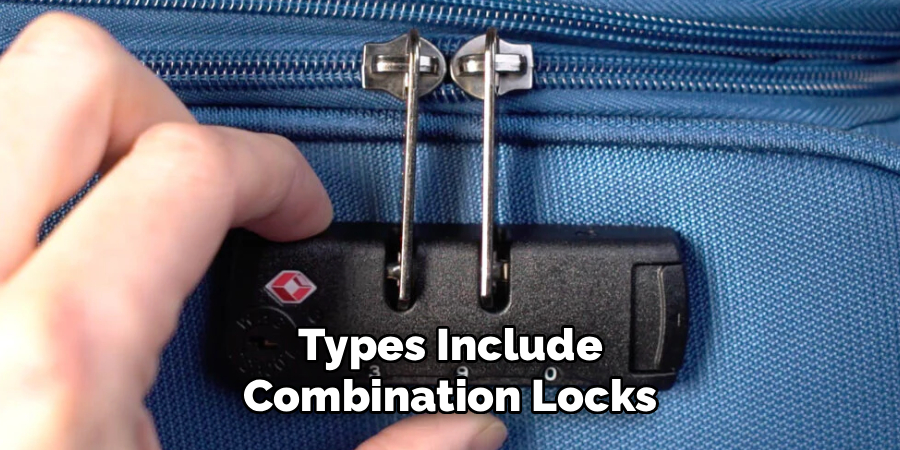
Check for any branding or model information on the lock to confirm its type. Knowing the specific type ensures you follow the correct steps for resetting or changing the code, as instructions can vary depending on the lock design.
Step 2: Reset Combination Locks
For combination locks, locate the reset button on the back or bottom of the lock and use your chosen tool to press it in. While holding down the button, set your desired new combination by turning the dials to your preferred numbers. Once done, release the reset button and test your new code by opening and closing the lock with it.
Step 3: Change Key Locks
If you have a key lock, it is important to make sure you have a spare key or can easily obtain a new one in case of losing the original. To change the code on a key lock, insert the current key into the lock and turn it clockwise 90 degrees.
Place your chosen tool into the small hole on the side of the lock and press down firmly until you hear a click. While still holding down, turn the dial to your desired new code and release both tools simultaneously.
Step 4: Keep Your Code Secure
Once you have successfully changed or reset your code, make sure to keep it secure by memorizing it or writing it down in a safe place. Avoid sharing your code with others, especially if it grants access to a secure area or valuable items. Be mindful of who can see you entering the code and try to cover the keypad with your body or hand while inputting it.
It is also important to periodically check and maintain your key lock. Over time, dirt and debris can build up in the lock mechanism, making it difficult to open or change the code. Use a small amount of lubricant on the key and insert it into the lock to keep it functioning smoothly.
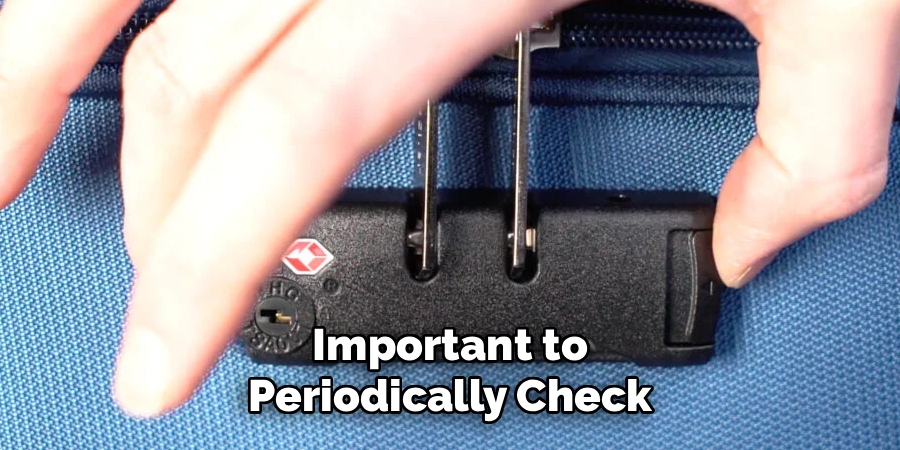
Step 5: Leave the Area Securely
Once you have successfully entered or changed the code and retrieved your key, it is important to leave the area securely. Make sure all doors are closed and locked behind you, and do not leave any personal belongings or valuable items unattended.
If you are in a public place, be aware of your surroundings and potential security risks. If possible, try to avoid entering codes or changing locks in isolated or poorly lit areas. Remember to also securely store your key after using it. Do not leave it out in plain sight where others may see it. Consider investing in a small lockbox to hold your key while you are away from home for an extended period of time.
Following these steps on how to change tsa lock code and keep your belongings secure can provide peace of mind while travelling. It is important to stay vigilant and take precautions to protect your personal items, especially when they are easily accessible through a lock. With proper care and attention, you can ensure the safety of your belongings and enjoy a worry-free trip.
Tips and Warnings
Tip
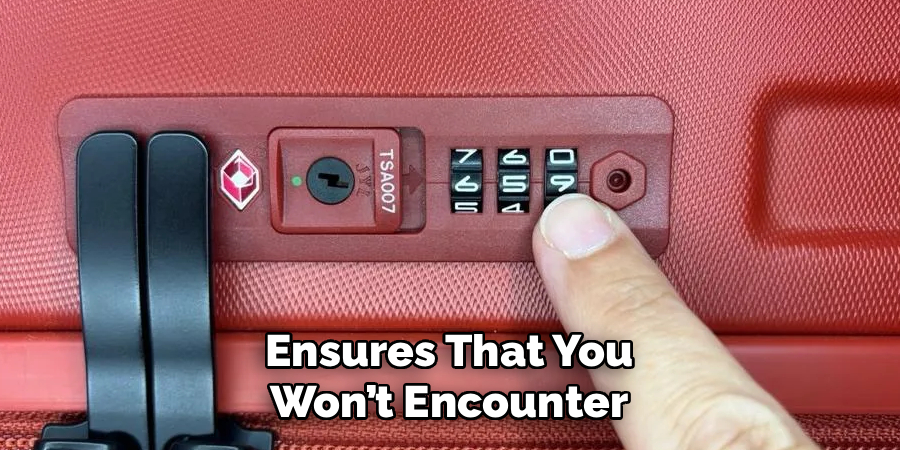
Always double-check your new TSA lock code before using it on your luggage. This ensures that you won’t encounter any difficulties unlocking your bag later.
Tip
Keep a record of your lock code in a secure location, such as a password manager or a hidden note, so you can reference it if needed.
Tip
Test the lock thoroughly after setting the new code to confirm it functions properly.
Warning:
Avoid using easy-to-guess combinations like “000” or “123,” as these compromise the security of your belongings.
Warning
Do not share your TSA lock code with others unless absolutely necessary, as this can increase the risk of theft.
Warning
Inspect your lock for any signs of tampering before and after each trip to ensure it has not been compromised.
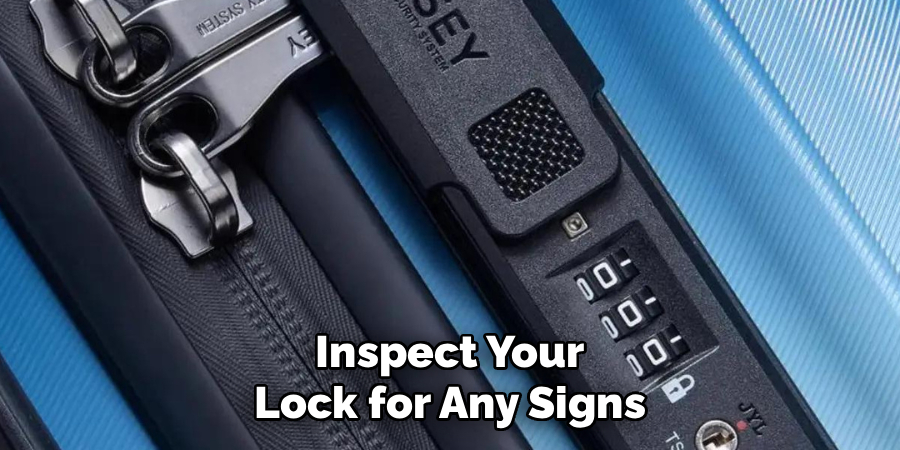
Troubleshooting
If your TSA lock is not working as expected, follow these steps to resolve common issues:
Forgotten Code
- Attempt standard factory reset codes like “000” or refer to the manufacturer’s manual for instructions on resetting the lock.
Lock Won’t Open
- Ensure you are entering the correct code. Double-check for any misaligned dials that might prevent the lock from releasing.
Damaged or Jammed Lock Mechanism
- Inspect the lock for visible damage or debris. Gently clean the dials and mechanism to remove any obstructions.
TSA Key Use
- If TSA personnel opened your lock, verify that it was securely closed afterward. Look for a TSA notification indicating an inspection.
If none of these steps resolve the issue, contact the lock’s manufacturer for customer support or replacement options. Avoid forcing the lock open, as this may cause further damage.
Do You Need to Hire a Professional?
If all troubleshooting steps fail and the lock remains unusable, it may be time to consider hiring a professional locksmith. A locksmith has the tools and expertise to safely open and repair locks without causing unnecessary damage. This is particularly useful for high-value or intricate locks that require specialized care.
Before hiring a locksmith, ensure they are licensed and reputable to avoid potential security risks. While this option may come at an added cost, it can save time and prevent further complications, ensuring your belongings remain secure.
Frequently Asked Questions
Q: Can I Change My TSA Lock Code?
A: Yes, most TSA locks come with a resettable combination feature that allows you to set a new code. Refer to the manufacturer’s instructions for specific steps on how to reset your lock.
Q: Is There a Way to Open a TSA Lock Without Knowing the Code?
A: No, only authorized personnel at airports have access to master keys that can open TSA locks. If you forget your code, you will need to contact the manufacturer or purchase a new lock.
Q: How Secure Are TSA Locks?
A: TSA locks are not meant to be completely secure, as they can be opened by authorized personnel. However, they do provide an extra layer of protection and act as a deterrent for potential theft.
Q: Can I Use My Own Lock Instead of a TSA Lock?
A: It is not recommended to use your own lock instead of a TSA lock when traveling through airports. This is because security officials may need to inspect your bag and using a non-TSA-approved lock could result in it being cut off.
Q: What Happens If My Bag Is Selected for Inspection?
A: If your bag is selected for inspection, TSA officials will use a master key to open your TSA-approved lock and perform the necessary inspection. Afterwards, they will re-lock your bag and return it to you.
Q: What Should I Do If My Lock Is Cut Off?
A: If your lock is cut off by TSA officials, you can file a claim with them for reimbursement. However, it is important to note that this process can take some time and may not always result in full reimbursement.
Conclusion
In conclusion, safeguarding your belongings while traveling should always be a priority. By understanding how to properly use and change your TSA lock code, you can add an extra layer of security to your items.
Combine this with other smart practices, such as securing spare keys and staying attentive to your surroundings, to ensure a safe and enjoyable travel experience. With these precautions in place, you can focus on creating memorable experiences without unnecessary worries about your possessions. Thanks for reading this article on how to change tsa lock code.
